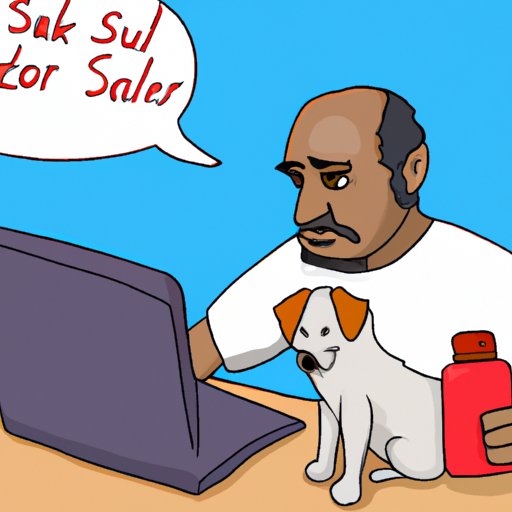As a dog owner, you are probably aware that certain foods can be harmful to your pet, but what about seemingly harmless substances like salt? While salt is an essential component of a dog’s diet, excessive consumption can lead to a condition known as salt poisoning, which can have severe, and at times, fatal consequences. This comprehensive article will delve into what salt does to dogs, the symptoms of salt poisoning, and how to prevent it.
Table of Contents
- Understanding Salt and Its Role in a Dog’s Diet
- The Danger of Excessive Salt: Salt Poisoning
- Symptoms of Salt Poisoning in Dogs
- Treatment and Prevention of Salt Poisoning
- Frequently Asked Questions
Key Takeaways
- Salt is necessary in a dog’s diet, but too much can lead to salt poisoning.
- Symptoms of salt poisoning include vomiting, diarrhea, lethargy, and in severe cases, seizures or coma.
- Treatment involves immediate veterinary care and measures to decrease salt concentration in the body.
- Prevention is key—limit your dog’s access to salty foods and monitor their diet closely.
Understanding Salt and Its Role in a Dog’s Diet
Salt, or sodium chloride, is an essential nutrient for dogs, just as it is for humans. It aids in nerve and muscle function, helps maintain the body’s fluid balance, and plays a crucial role in digestion. According to the National Research Council, a dog’s diet should contain at least 0.3% sodium for optimal health.
However, just like any other nutrient, balance is critical. While a lack of salt can lead to a host of health issues, an excess can also be detrimental. This delicate balance can be upset by giving your dog people food, which often contains higher amounts of salt than dog food. Reading the nutritional content of your dog’s food can help maintain a healthy balance.
The Danger of Excessive Salt: Salt Poisoning
Salt poisoning, or hypernatremia, occurs when a dog ingests too much salt and the salt concentration in the body becomes too high. This can be the result of consuming salty foods, drinking seawater, or ingesting household items containing salt, such as play dough or paint balls.
As the body tries to balance the high salt concentration, cells release water, leading to dehydration. This can impact many organs, but the effect on the brain can be particularly severe, leading to neurological symptoms. In extreme cases, this can lead to permanent damage or even death.
Symptoms of Salt Poisoning in Dogs
The symptoms of salt poisoning can vary from mild to severe, depending on the amount of salt ingested. Initial symptoms can include:
- Increased thirst and urination
- Vomiting and diarrhea
- Loss of appetite
- Lethargy
If not treated promptly, more severe symptoms can develop, including:
- Muscle tremors or seizures
- Elevated body temperature
- Coma
If you notice these symptoms, particularly after your dog has ingested a large amount of salt, it’s crucial to seek immediate veterinary care. This guide can help you understand what to do in such situations.
Treatment and Prevention of Salt Poisoning
Treatment for salt poisoning involves immediate veterinary care. Your vet may induce vomiting or administer intravenous fluids to help reduce the salt concentration in the body. In severe cases, hospitalization may be necessary.
Prevention is always better than cure. Limit your dog’s access to salty foods and ensure their diet is balanced and appropriate for their size, age, and health condition. Always provide fresh water for your dog to drink. If you live near the sea, be cautious of your dog drinking seawater, which is high in salt. Familiarizing yourself with the common household hazards for dogs can help keep your furry friend safe.
Frequently Asked Questions
1. Can Dogs Eat Salt?
Yes, dogs can eat salt, and it is an essential part of their diet. However, they only require a small amount. Excessive salt can lead to salt poisoning.
2. What Happens If a Dog Eats Too Much Salt?
If a dog eats too much salt, they can develop salt poisoning, which can cause symptoms such as increased thirst, vomiting, and in severe cases, seizures or coma.
3. How Much Salt is Safe for Dogs?
According to the National Research Council, a dog’s diet should contain at least 0.3% sodium. However, the exact amount can depend on your dog’s size, age, and health condition.
In conclusion, while salt is an essential part of a dog’s diet, too much of it can lead to salt poisoning. As a caring dog owner, it’s important to monitor your pet’s salt intake, limit their access to salty foods, and provide them with a balanced diet and plenty of fresh water. If you suspect your dog has consumed too much salt, seek veterinary care immediately. Remember, the health and wellbeing of your beloved pet is in your hands.



